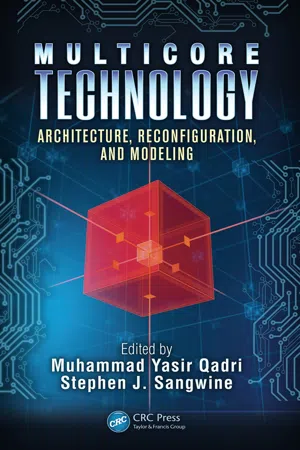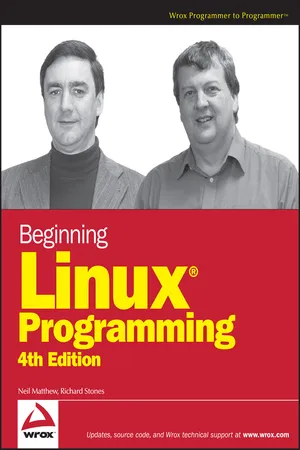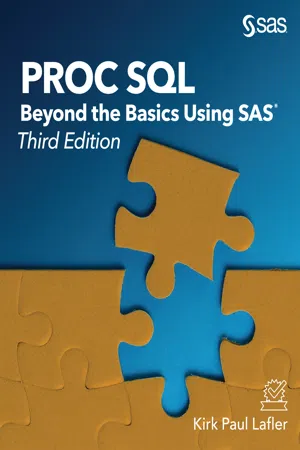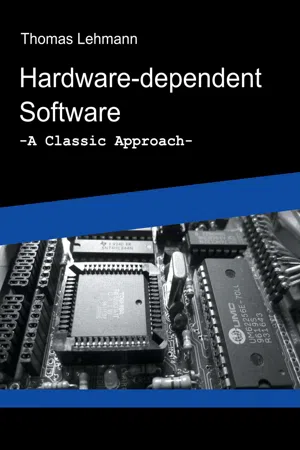Computer Science
Debugging
Debugging is the process of identifying and fixing errors or bugs in computer software. It involves analyzing the code, testing the program, and making necessary changes to ensure that it runs smoothly and efficiently. Debugging is an essential part of software development and helps to improve the quality of the final product.
Written by Perlego with AI-assistance
Related key terms
Related key terms
1 of 4
Related key terms
1 of 3
7 Key excerpts on "Debugging"
- eBook - ePub
Multicore Technology
Architecture, Reconfiguration, and Modeling
- Muhammad Yasir Qadri, Stephen J. Sangwine(Authors)
- 2018(Publication Date)
- CRC Press(Publisher)
tracing is positioned as a complementary method to traditional Debugging, to be used on the cumbersome bugs that cannot easily be resolved by traditional means. There are both hardware and software challenges to be overcome before tracing can further displace traditional debug methods. However, as the infrastructure becomes available, there is a need for software developers to start embracing the tools that will allow more efficient resolution of multithreaded bugs.In this chapter we introduce the traditional approaches to software Debugging, give an assessment of how future systems will be debugged, and outline work, including our own, currently being done to realize that goal.9.2 Software DebuggingSoftware faults (or bugs) are unintended segments of code in a program which can lead to errors in the intended functionality of software. In formal terms, that means that the software is not conforming to its requirements or specifications. The process by which such faults are identified and fixed is called software Debugging.In general, the process of software Debugging aims to identify bugs and trace their manifestations back to an offending segment of source code. Tracking the bug to a certain point within a program’s execution requires that the system allows the program’s internal data structures to be observed in the midst of execution, known as observability. Observable structures can include variables, registers, memory addresses, or other internal data that may help to identify the fault, both in terms of location and time. Once a fault is identified, its cause can be determined if the program’s symbol table can be used to link its executable machine code back to its source code.The program can then be re-executed to verify that the fault has been corrected. This typically means modifying and recompiling source code and re-executing the program, but if either execution or recompilation will take a long time, it can also mean utilizing other methods. Without recompilation, controllability - eBook - ePub
- Neil Matthew, Richard Stones(Authors)
- 2011(Publication Date)
- Wrox(Publisher)
Chapter 10 Debugging According to the Software Engineering Institute and the IEEE, every significant piece of software will initially contain defects, typically around two per 100 lines of code. These mistakes lead to programs and libraries that don’t perform as required, often causing a program to behave differently than it’s supposed to. Bug tracking, identification, and removal can consume a large amount of a programmer’s time during software development. In this chapter, we look at software defects and consider some tools and techniques for tracking down specific instances of erroneous behavior. This isn’t the same as testing (the task of verifying the program’s operation in all possible conditions), although testing and Debugging are, of course, related, and many bugs are discovered during the testing process. Topics we cover include Types of errors General Debugging techniques Debugging with GDB and other tools Assertions Memory use Debugging Types of Errors A bug usually arises from one of a small number of causes, each of which suggests a specific method of detection and removal: Specification errors: If a program is incorrectly specified, it will inevitably fail to perform as required. Even the best programmer in the world can sometimes write the wrong program. Before you start programming (or designing), make sure that you know and understand clearly what your program needs to do. You can detect and remove many (if not all) specification errors by reviewing the requirements and agreeing that they are correct with those who will use the program. Design errors: Programs of any size need to be designed before they’re created. It’s not usually enough to sit down at a computer keyboard, type source code directly, and expect the program to work the first time. Take time to think about how you will construct the program, what data structures you’ll need, and how they will be used - eBook - ePub
- Ivor Horton(Author)
- 2011(Publication Date)
- Wrox(Publisher)
11Debugging TechniquesIf you have been doing the exercises in the previous chapters, you have most likely been battling with bugs in your code. In this chapter you will explore how the basic Debugging capabilities built into Visual C++ 2008 can help with this. You will also investigate some additional tools that you can use to find and eliminate errors from your programs, and see some of the ways in which you can equip your programs with specific code to check for errors.In this chapter, you will learn about:- How to run your program under the control of the Visual C++ 2008 debugger
- How to step through your program a statement at a time
- How to monitor or change the values of variables in your programs
- How to monitor the value of an expression in your program
- The call stack
- Assertions and how to use them to check your code
- How to add Debugging specific code to a program
- How to detect memory leaks in a native C++ program
- How to use the execution tracing facilities and generate Debugging output in C++/CLI programs
Bugs are errors in your program and Debugging is the process of finding and eliminating them. You are undoubtedly aware by now that Debugging is an integral part of the programming process—it goes with the territory as they say. The facts about bugs in your programs are rather depressing:- Every program you write that is more than trivial will contain bugs that you need to try to expose, find, and eliminate if your program is to be reliable and effective. Note the three phases here—a program bug is not necessarily apparent; even when it is apparent you may not know where it is in your source code; and even when you know roughly where it is, it may not be easy to determine what exactly is causing the problem and thus eliminate it.
- Many programs that you write will contain bugs even after you think you have fully tested them.
- Program bugs can remain hidden in a program that is apparently operating correctly—sometimes for years. They generally become apparent at the most inconvenient moment.
- eBook - ePub
The Go Workshop
A New, Interactive Approach to Learning Go
- Delio D'Anna, Andrew Hayes, Sam Hennessy, Jeremy Leasor, Gobin Sougrakpam, Dániel Szabó(Authors)
- 2019(Publication Date)
- Packt Publishing(Publisher)
9. Basic Debugging
OverviewIn this chapter, we will look at basic Debugging methodologies. We will look at some proactive measures that we can take to reduce the number of bugs that we introduce into our program. Once we understand these measures, we will investigate the ways in which we can locate a bug.You will be able to acquaint yourself with Debugging in Go and implement various ways to format printing. You will evaluate various techniques of basic Debugging and find the general location of a bug in the code. By the end of the chapter, you will know to print out variable types and values using Go code and also log the state of an application for Debugging purposes.Introduction
As you develop software programs, there are going to be times that your program behaves in an unintended way. For instance, the program could be throwing an error and might crash. A crash is when our code stops functioning midway and then exits abruptly. Perhaps, the program has given us unexpected results. For example, we request a video streaming service for the movie Rocky 1 , but instead get Creed 1! Or, you deposited a check into your bank account but, instead of being credited, the bank software debited your account. These examples of software programs behaving in an unintended way are called bugs. Sometimes, "bug" and "error" are used interchangeably. In Chapter 6 , Errors , in the What Are Errors? section, we discussed how there are three different types of errors or bugs: syntax errors, runtime errors, and logic errors. We also examined examples and saw the difficulty of discovering the location of each type of error.The process of determining the cause of unintended behavior is called Debugging. There are various causes of bugs that get released into production:- Testing is performed at the end of the development
- eBook - ePub
Learn Python Programming
A beginner's guide to learning the fundamentals of Python language to write efficient, high-quality code, 2nd Edition
- Fabrizio Romano(Author)
- 2018(Publication Date)
- Packt Publishing(Publisher)
Debugging and Troubleshooting
"If Debugging is the process of removing software bugs, then programming must be the process of putting them in." – Edsger W. DijkstraIn the life of a professional coder, Debugging and troubleshooting take up a significant amount of time. Even if you work on the most beautiful code base ever written by a human, there will still be bugs in it; that is guaranteed.We spend an awful lot of time reading other people's code and, in my opinion, a good software developer is someone who keeps their attention high, even when they're reading code that is not reported to be wrong or buggy.Being able to debug code efficiently and quickly is a skill that every coder needs to keep improving. Some think that because they have read the manual, they're fine, but the reality is, the number of variables in the game is so great that there is no manual. There are guidelines one can follow, but there is no magic book that will teach you everything you need to know in order to become good at this.I feel that on this particular subject, I have learned the most from my colleagues. It amazes me to observe someone very skilled attacking a problem. I enjoy seeing the steps they take, the things they verify to exclude possible causes, and the way they consider the suspects that eventually lead them to a solution.Every colleague we work with can teach us something, or surprise us with a fantastic guess that turns out to be the right one. When that happens, don't just remain in wonderment (or worse, in envy), but seize the moment and ask them how they got to that guess and why. The answer will allow you to see whether there is something you can study in-depth later on so that, maybe next time, you'll be the one who will catch the bug.Some bugs are very easy to spot. They come out of coarse mistakes and, once you see the effects of those mistakes, it's easy to find a solution that fixes the problem. - eBook - ePub
PROC SQL
Beyond the Basics Using SAS, Third Edition
- Kirk Paul Lafler(Author)
- 2019(Publication Date)
- SAS Institute(Publisher)
The Science of Debugging by Matthew A. Telles and Yuan Hsieh (The Coriolis Group, 2001).The Debugging process consists of five steps. See Table 11.1 .Table 11.1: Debugging Process Steps and TasksDebugging Step Task Description Problem Identification 1. Determine if a bug exists in the code.2. Determine what the problem is by playing detective.3. Describe why the problem is a bug.4. Determine what the code should do.5. Determine what the code is doing.Information Collection 1. Collect user comments and feedback.2. Collect personal observations and symptoms.3. Review SAS log information.4. Collect test case(s) that highlight the problem.5. Capture environmental information (for example, system settings, operating environment, external elements, etc.).Problem Assessment & Classification 1. Develop a theory about what caused the problem.2. Review the code.3. Classify the problem into one of the following categories:◦Requirements problem◦Syntax error◦CPU problem◦Memory problem◦◦Storage problem - eBook - ePub
Hardware-dependent Software
A Classical Approach
- Thomas Lehmann(Author)
- 2017(Publication Date)
- Books on Demand(Publisher)
The gained knowledge often leads to a refinement of the design (compare Fig. 7.8) or is required to create a driver design at all. In the design areas with a sufficient knowledge base, the implementation of features can fill the initial driver frame as a top-down approach. As driver are crucial systems, following coding styles and working with a version control system like Git[ 10 ] should be taken for granted for a professional developer (compare for instance [ 40 ]). The test should not only be performed on the developer machine, those have aggregated special settings and configurations over time. The distribution and installation procedure is a base infrastructure like logging, so it should be taken care of right from the beginning. The automated installation process can than be used to distribute the current version to test machines for verification. So the installation procedure a a customer site becomes part of the verification process. Approaches for test and verification are discussed later in Sec. 7.3 after a discussion on Debugging. 7.2. Debugging Debugging is an essential part of the software development process, often neglected, as no software is error free directly from the beginning. Either due to design, programming, or documentation faults software defects are simply there, but obviously shouldn’t be. Tracking down to the root cause of the error, the real defect, is what is usually called Debugging. A system changes from a sane state due to a defects into a state, where the system fails (see in [ 77 ]). Debugging is the isolation/separation of components and code fragments in a causeand-effect chain and cross-checking the expected behaviour against the observed behaviour to narrow down the defect location
Index pages curate the most relevant extracts from our library of academic textbooks. They’ve been created using an in-house natural language model (NLM), each adding context and meaning to key research topics.
Explore more topic indexes
Explore more topic indexes
1 of 6
Explore more topic indexes
1 of 4






